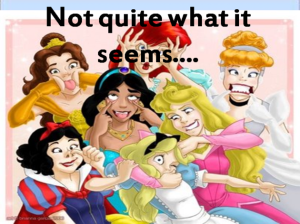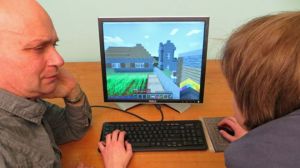One of the most intellectually stimulating books of the fall season is Greg Lukianoff and Jonathan Haidt‘s The Coddling of the American Mind. It is a formidable and persuasive critique of recent changes in American university campus culture. The new orthodoxy of “safe spaces” and “no platforming” was ripe for serious analysis and the authors have diagnosed the sources of what is termed “safetyism.” Young people are being taught to “trust their feelings” and to call out the “goodies” and “baddies” in contemporary society. In a strange twist, “what doesn’t kill you, makes you weaker.”
 The two academics demonstrate a sound grasp of the “culture war” enveloping campus culture and correctly point out that “safetyism” poses a real threat to academic freedom on North American campuses. As a child of the radical sixties, I was there when students fought to make the universities more open to new ideas, controversial speakers, and more democratic practices. Racism, bigotry and intolerance should be resisted and rejected. Having said that, it’s disconcerting to see today’s university students so quick to take offense and so inclined to silence those espousing different viewpoints.
The two academics demonstrate a sound grasp of the “culture war” enveloping campus culture and correctly point out that “safetyism” poses a real threat to academic freedom on North American campuses. As a child of the radical sixties, I was there when students fought to make the universities more open to new ideas, controversial speakers, and more democratic practices. Racism, bigotry and intolerance should be resisted and rejected. Having said that, it’s disconcerting to see today’s university students so quick to take offense and so inclined to silence those espousing different viewpoints.
While Lukianoff and Haidt correctly dissect the problem, they miss the mark in diagnosing the state of early childhood learning. The “decline of play” is plainly observable in today’s schoolyards and playgrounds. Overly protective parents, known as “helicopter parents,” are easy to spot in affluent and upper middle class school communities — and gravitate to independent schools. It is simply wrong, in my estimation, to assume that “play learning” is endangered in pre-school, kindergarten, or early years education.
“Play-based learning” is ascendant in Canadian Pre-Kindergarten to Grade 3 education and is in no danger of disappearing. It is no exaggeration to say that “play learning” is the current catechism espoused by faculties of education and accepted, without question, by provincial education ministries. Since 2010-11, early leading has emerged as an education priority and provincial education departments, one after another, have changed their names to become the “Department of Early Childhood Development and Education.”
Where did Lukianoff and Haidt get the idea that “child’s play” was threatened in the primary grades? Their primary source appears to be Erika Christakis, a Yale University child study professor and author of the 2017 book, The Importance of Being Little. Judging from her writings, she is an unabashed constructivist who sees great potential in “little children” and idealizes them “watching bulldozers on a construction site” or “chasing butterfies in flight.” Surveying today’s preschool and kindergarten classrooms, most likely in New England, she claims that “learning has been reduced to scripted lessons and subject metrics that too often undervalue the child’s intelligence while overtaxing the child’s growing brain.”
 She is, in all likelihood, well acquainted with Ivy League prep schools. High and mismatched expectations, she contends, “wreak havoc on the family.” “Parents fear that if they choose the ‘wrong’ program, their child won’t get into the ‘right’ college.” Such fears are “wildly misplaced,” according to Christakis, because young children are not only natural learners, but “exceptionally strong thinkers.”
She is, in all likelihood, well acquainted with Ivy League prep schools. High and mismatched expectations, she contends, “wreak havoc on the family.” “Parents fear that if they choose the ‘wrong’ program, their child won’t get into the ‘right’ college.” Such fears are “wildly misplaced,” according to Christakis, because young children are not only natural learners, but “exceptionally strong thinkers.”
Unstructured free play is good for little children and it does help to prepare them for the real, ‘rough-and-tumble’ world. Where Christakis, Lukianoff and Haidt all go wrong is in setting up ‘free play’ in opposition to any form of early learning incorporating explicit teaching of core knowledge and skills. Claiming that it is harmful flies in the face of a great deal of recent education research informed by cognitive science.
Australian teacher-researcher Greg Ashman has effectively demolished the two essential claims about early learning made in The Coddling of the American Mind. Free play may well be essential in learning social skills, but that does not mean it suffices for academic learning. Renowned Canadian education critic, Andrew Nikiforuk, once put it this way: “If learning is so natural, why do we go to school?'” The implicit answer: to learn something.
Pyschologist David C. Geary makes the helpful distinction between two types of learning, biological primary and biological secondary forms. Play is probably the best way to learn social skills, such as learning to work together, but not for learning academic abilities and skills. The weight of research evidence, drawn from cognitive science, suggests that most children require more explicit instruction because learning requires some prodding, practice, and persistence. Some students, particularly those with learning difficulties or socio-economic disadvantages, simply do not grasp the key ideas or master the fundamental skills without a measure of teacher-guidance.
 Lukianoff and Haidt, citing Christakis, are critics of No Child Left Behind (NCLB) and the “Common Core Curriculum” and very much opposed to student testing in elementary grades. That may be why they are so inclined to see “testitis” creeping into the early grades. While there is some evidence of it in American elementary schools, the same cannot be said for Canadian schools. No homework is given in Kindergarten and only modest amounts in Grades 1 to 3. Provincial testing is administered starting in Grade 3 but it cannot be described as “high stakes” testing of the kind found at higher grades in the United States.
Lukianoff and Haidt, citing Christakis, are critics of No Child Left Behind (NCLB) and the “Common Core Curriculum” and very much opposed to student testing in elementary grades. That may be why they are so inclined to see “testitis” creeping into the early grades. While there is some evidence of it in American elementary schools, the same cannot be said for Canadian schools. No homework is given in Kindergarten and only modest amounts in Grades 1 to 3. Provincial testing is administered starting in Grade 3 but it cannot be described as “high stakes” testing of the kind found at higher grades in the United States.
Lukianoff and Haidt’s The Coddling of the American Mind offers a telling critique of what’s gone wrong on many university colleges. Children from advantaged backgrounds may, from an early age, be subjected to academic pressures and discouraged from engaging in free play. Parents with two degrees and homes full of books give privileged kids an early immersion in learning and, in many cases, have the added benefit of parents providing explicit instruction to fill gaps in understanding. Over-parenting can and does produce coddled children , but it’s a stretch to claim that this is the real life experience of children from less favoured circumstances, raised in disadvantaged and marginalized communities.
Early learning programs in Canada, with few exceptions, are “play-based” and place considerable emphasis on nurturing social skills and supporting ‘student well-being.” Few Canadian early learning researchers would recognize the pre-schools and kindergartens as depicted in Lukianoff and Haidt’s otherwise impressive book. In fact, it’s tempting to hypothesize that Canadian primary years programs are actually the nurseries for a younger generation who are so bubble-wrapped that “skinned knees” are treated as calamities.
Where’s the evidence that “play-learning” is imperiled in today’s pre-schools and kindergartens? How prevalent is “helicopter parenting” and is it directed toward raising standards or to ‘school-proofing’ kids? Is it fair to suggest that play learning and academic learning are mutually incompatible? Is “safetyism” what is actually being taught in kindergarten?










